Address
304 North Cardinal
St. Dorchester Center, MA 02124
Work Hours
Monday to Friday: 7AM - 7PM
Weekend: 10AM - 5PM
Address
304 North Cardinal
St. Dorchester Center, MA 02124
Work Hours
Monday to Friday: 7AM - 7PM
Weekend: 10AM - 5PM

Dairy milk has long been the default choice, but the world of non-dairy milk alternatives is expanding at an astonishing rate. Whether you’re lactose intolerant, vegan, or simply seeking a more ethical or tastier option, plant-based milk alternatives offer a wide array of choices to cater to your preferences. Common alternatives like oat and almond milk have gained popularity, offering distinct flavors and a guilt-free conscience, as they don’t involve animal farming. To help you navigate this diverse landscape, we’ve collaborated with Ilana Muhlstein, a renowned nutritionist, dietician, and the author of ‘You Can Drop It!,’ to present you with a carefully curated list of the finest milk alternatives. With our expert guidance, you can enjoy your favorite coffee or baked goods without compromising on taste or values.
Google Trends data reveals a consistent upward trend in interest for milk alternatives since 2009. While we can’t pinpoint the exact catalyst for this surge, it’s undeniable that the non-dairy milk market is rapidly evolving. What initially began as a showdown between almond and soy milk has blossomed into a vibrant industry encompassing nut milks, grain milks, legume milks, and more. It begs the question: What can’t be transformed into milk? As of now, the answer remains uncertain.
A milk alternative, as the name suggests, is a non-dairy substitute for traditional dairy milk, such as whole milk, 2%, 1%, and skim milk. These alternatives are designed to mimic the texture and versatility of cow’s milk while offering different flavor profiles and nutritional characteristics. The most popular milk alternatives, based on data from 2015 to 2023, include almond milk, oat milk, and coconut milk, readily available at grocery stores and coffee shops. These milk alternatives can be used in cooking, drinking, or consuming, and they often have a longer shelf life compared to dairy milk.
There are several reasons why individuals choose milk alternatives over traditional dairy milk:
It’s crucial to be aware of potential drawbacks associated with some milk alternatives, such as low protein content and the presence of added sugars, oils, and emulsifiers. Protein is essential for muscle development, and excessive added sugars can contribute to weight gain. When selecting a milk alternative, it’s advisable to carefully read the product labels and choose options that align with your specific nutritional goals and preferences.
The choice of the best milk alternative for you depends on how you plan to use it. Here are some recommendations:
Ultimately, the best milk alternative for you depends on your personal taste and the specific application you have in mind, whether it’s coffee, baking, or cereal.
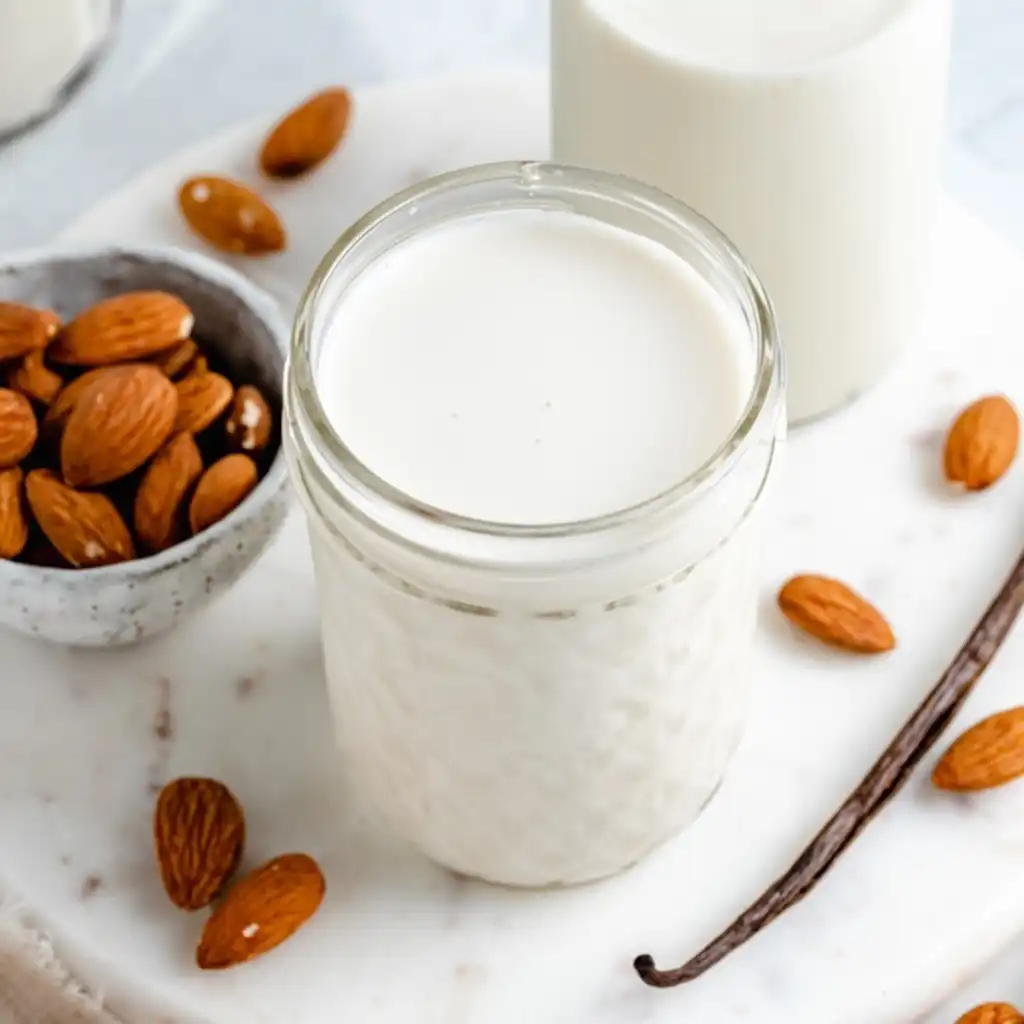
Almond milk has held a dominant position in the milk alternative market, accounting for approximately six out of every ten plant-based milk purchases. However, its popularity has been gradually receding with the ascent of oat milk. To produce almond milk, almonds are soaked in water, ground into a mixture, and then filtered. Nutritionist Ilana Muhlstein often recommends almond milk to her clients due to its low calorie and fat content, along with its richness in vitamin E. Thanks to its robust nutty flavor, almond milk is an excellent choice for various culinary applications, including baked goods, french toast, and bread pudding.
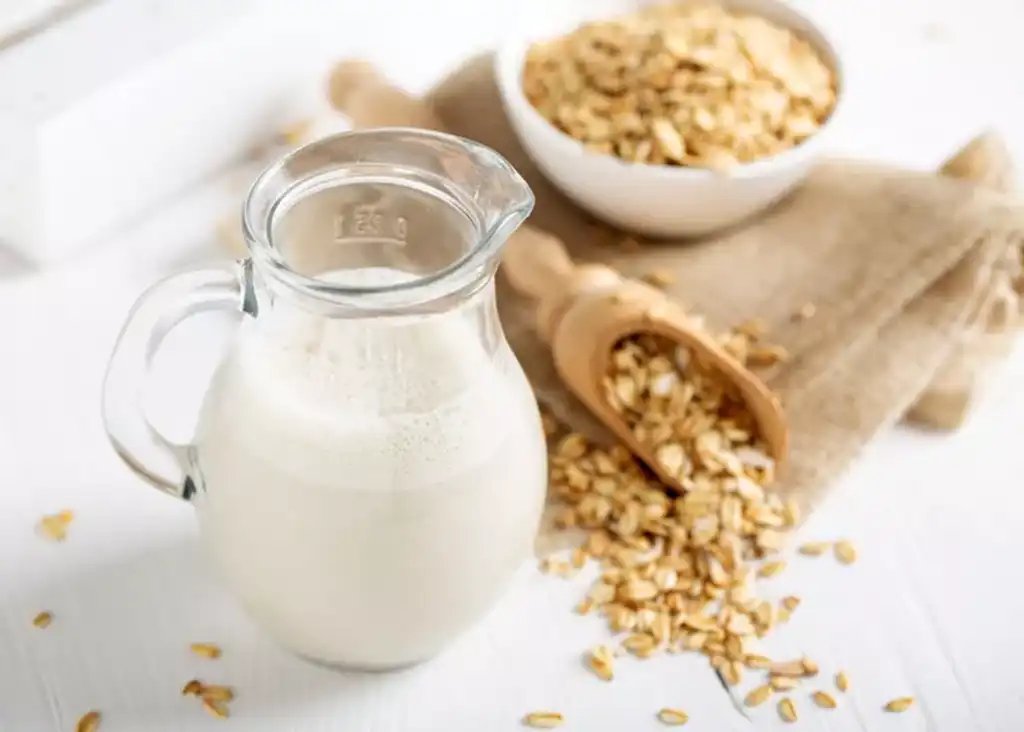
Oat milk is currently the trendiest non-dairy milk alternative on the market. It’s crafted by blending oats and water and then straining the mixture. Oat milk serves as an approachable gateway into the world of plant-based milks due to its resemblance in taste and mouth-feel to dairy milk, without any particularly dominant or off-putting flavors. This makes it a great choice for coffee and smoothies since it froths easily, creating a velvety, creamy texture. However, nutritionist Ilana Muhlstein advises against oat milk for those seeking weight loss, as it is “higher in carbohydrates and lower in protein.”

Soy milk holds a special place as one of the pioneering milk alternatives that found widespread popularity. It’s crafted by soaking soybeans in water for an extended period, followed by grinding and filtering. Soy milk has garnered a devoted following, and it happens to be a personal favorite of nutritionist Ilana Muhlstein. She particularly favors unsweetened, organic soy milk for adding a dash to her coffee, citing the flavor and the added sense of satisfaction it provides. You’ll find it readily available in most coffee shops and grocery stores, making it an accessible choice. Mixing it with oatmeal is a delightful way to boost your morning protein intake.

It’s important to distinguish coconut milk from coconut water, as they are distinct. Coconut milk is created by grating the white flesh of coconuts, mixing it with hot water, and then straining. For those who aren’t fond of the nutty flavors found in almond or macadamia nut milk, coconut milk provides an excellent alternative. It boasts a sweet fruitiness that complements creamy soups and curries splendidly. However, it’s essential to be mindful of added sugars that can increase the calorie count.
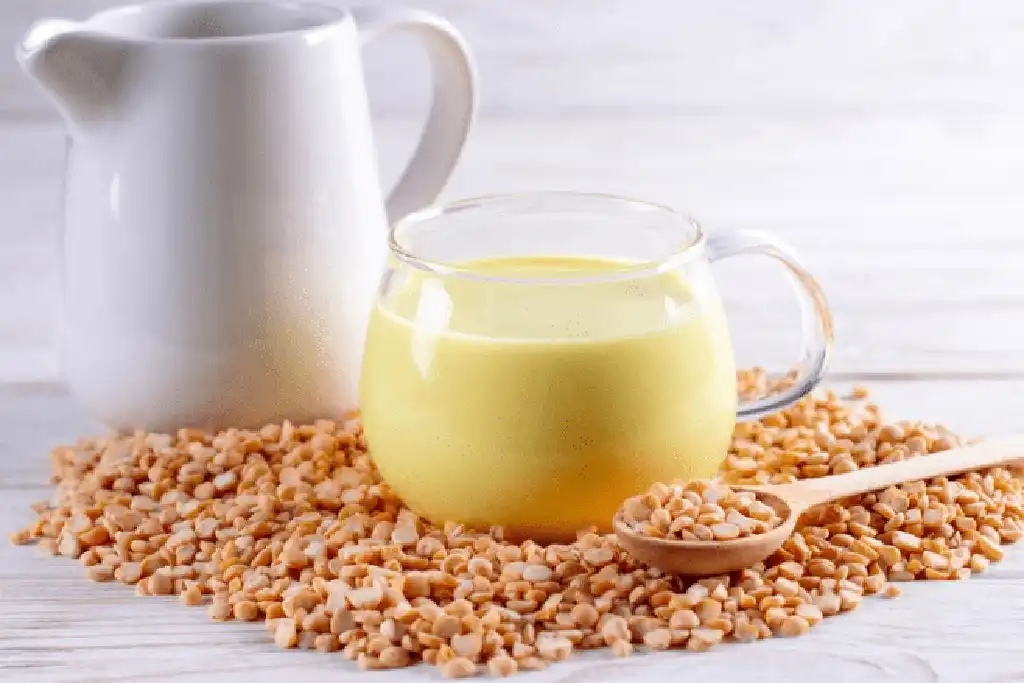
No need to fret, pea milk isn’t derived from the green peas typically served with dinner. It’s crafted from finely milled yellow field peas, which are blended with water. Pea milk is appreciated for its resemblance in taste to cow’s milk, making it a popular choice for consumption with cereal or as a standalone beverage.

Like many other non-dairy milk alternatives, cashew milk is created by soaking cashews in water, followed by draining and blending. It offers a milder alternative to almond milk, boasting a delicate nutty and creamy flavor that complements a variety of dishes without overwhelming the taste. Cashew milk is particularly appealing when used in applications like ice cream, soup, and cereal due to its creaminess and subtle flavor.
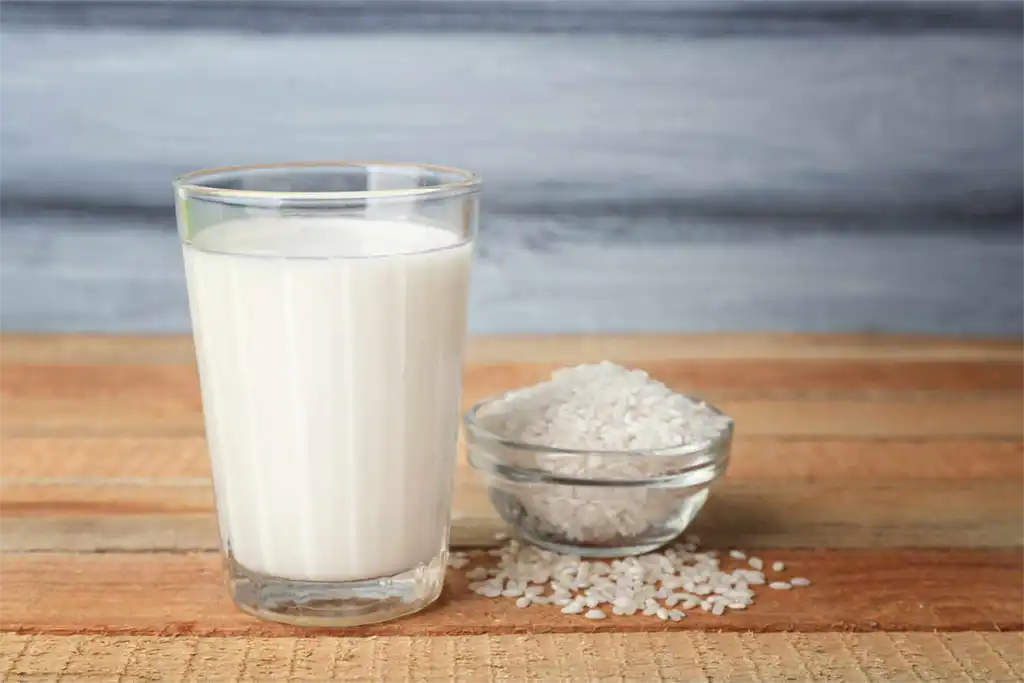
Rice milk, despite its potential environmental impact compared to other non-dairy milk alternatives, is an excellent choice for individuals with allergies or intolerances due to its hypoallergenic nature. It can be enjoyed without the adverse effects often associated with dairy, soy, or nut-based alternatives. Rice milk is created by passing rice through a grinding mill, followed by straining and blending with water. It shines when paired with flavors like cinnamon, vanilla, or banana, making it a delightful addition to dishes such as yogurt parfaits or hot chocolate.
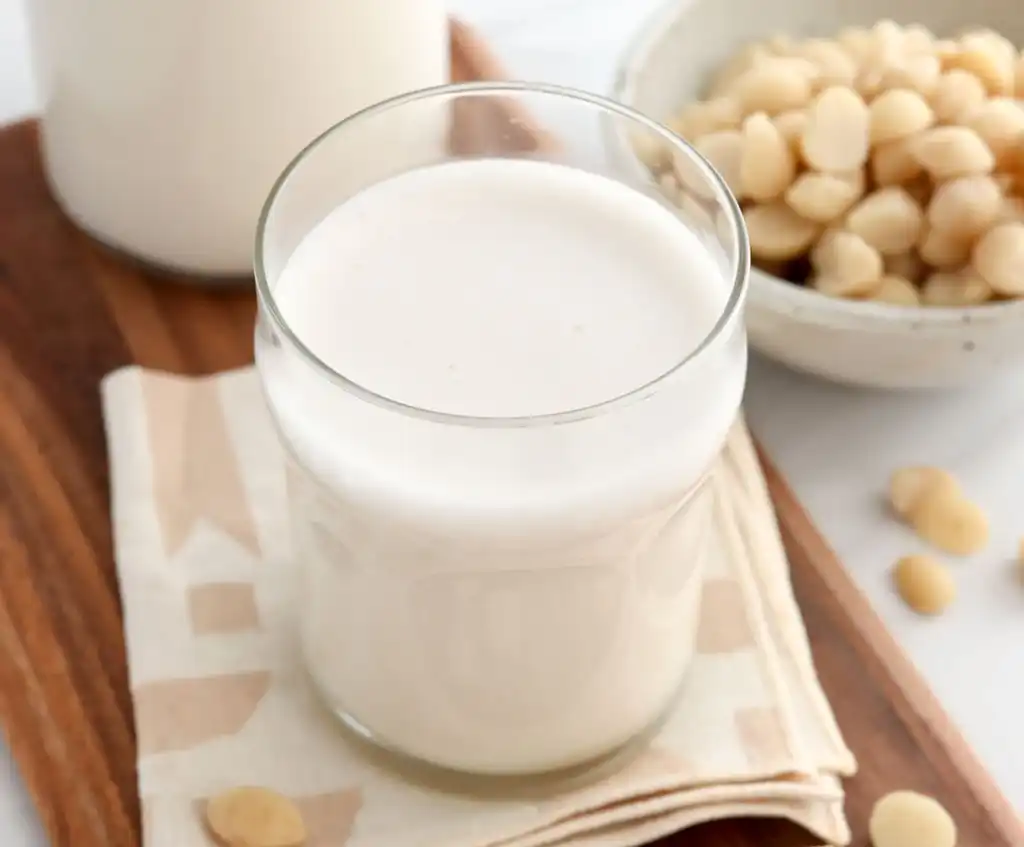
Macadamia milk, a lesser-known nut milk, is crafted by soaking macadamia nuts in water overnight, blending them, and then straining. With its thick and creamy texture, it froths easily, making it an excellent choice for topping beverages. It pairs well with granola and can be used in desserts when mixed with chocolate. It has been gaining popularity in recent times, with many trend reports suggesting it might become the next “it milk,” following in the footsteps of oat milk.

Flax seed milk is a convenient non-dairy milk alternative that many people choose to make at home due to its simplicity. To prepare it, mix flax seeds with water and blend the mixture, then strain it through a fine cloth. Flax milk can be a valuable addition to baked goods, providing an extra dose of fiber and serving as a natural thickener, even replacing eggs in some recipes. However, due to its high fiber content, it may not be the ideal choice for pairing with coffee.
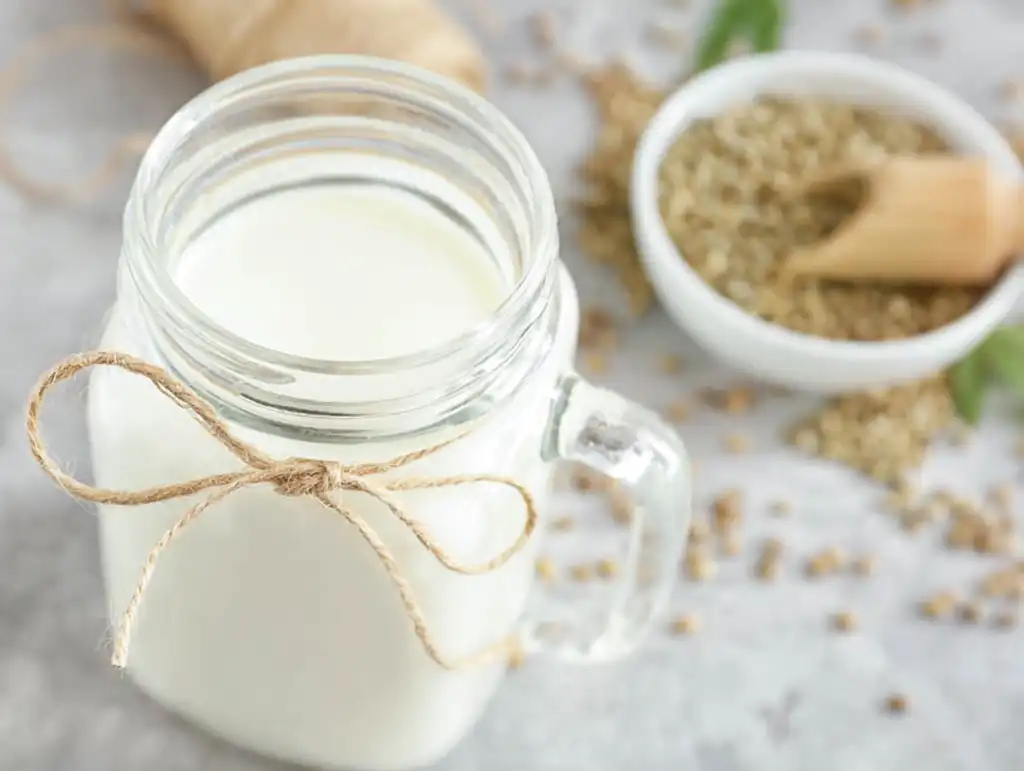
Contrary to some expectations, hemp milk does not contain THC or CBD, which are common extracts found in the marijuana plant. Hemp milk is exclusively made from hemp seeds, which lack the same properties as the flower and bud counterparts of the plant. The milk is created by blending hemp seeds with water and then straining the mixture. It finds its place in protein shakes and smoothies due to its nutritional attributes.
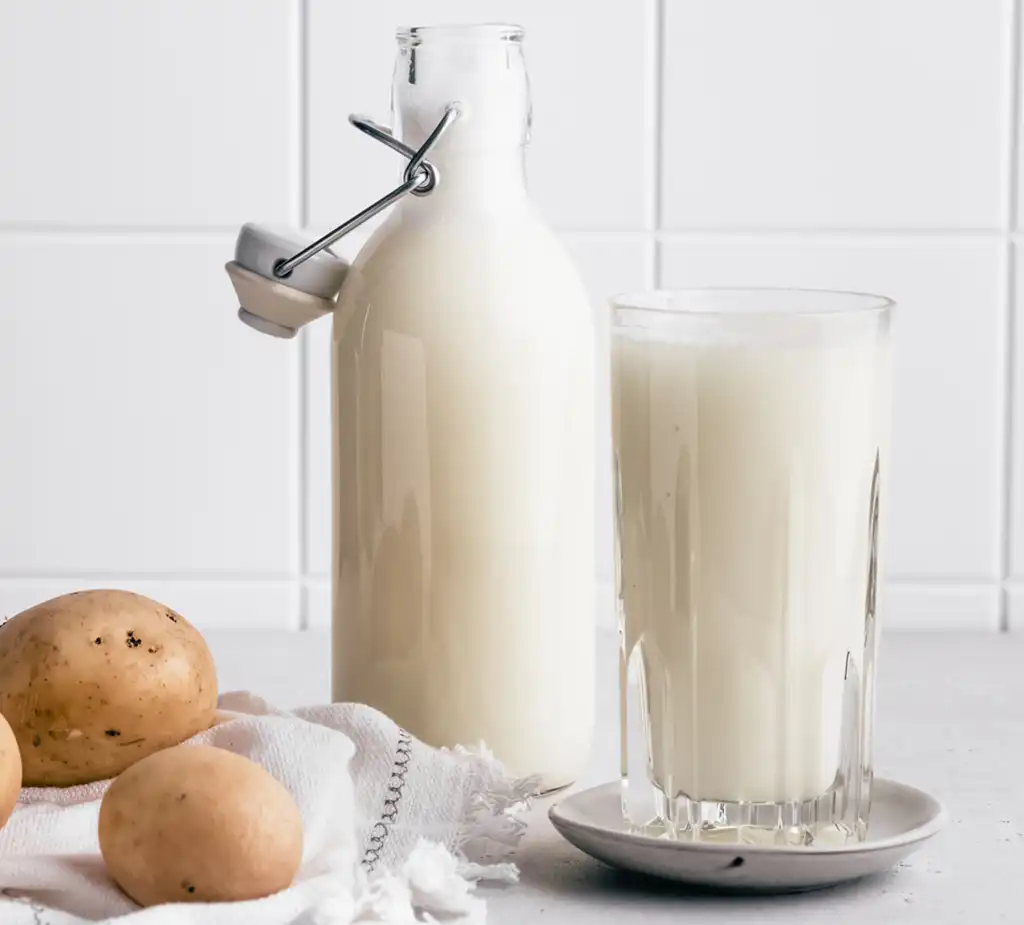
Potato milk is a novel plant-based milk alternative derived from potatoes. To create potato milk, potatoes are usually cooked, blended with water, and then filtered to achieve a liquid akin to traditional dairy milk in texture and consistency. This relatively recent addition to the world of non-dairy milk options is particularly well-suited for those with lactose intolerance, nut allergies, or those adhering to vegan or dairy-free diets. Its versatility and neutral taste make it an excellent choice for a wide range of culinary applications, both sweet and savory. Furthermore, potato milk is an environmentally conscious option, typically demanding less water during its production compared to certain other plant-based milks, contributing to a reduced carbon footprint.
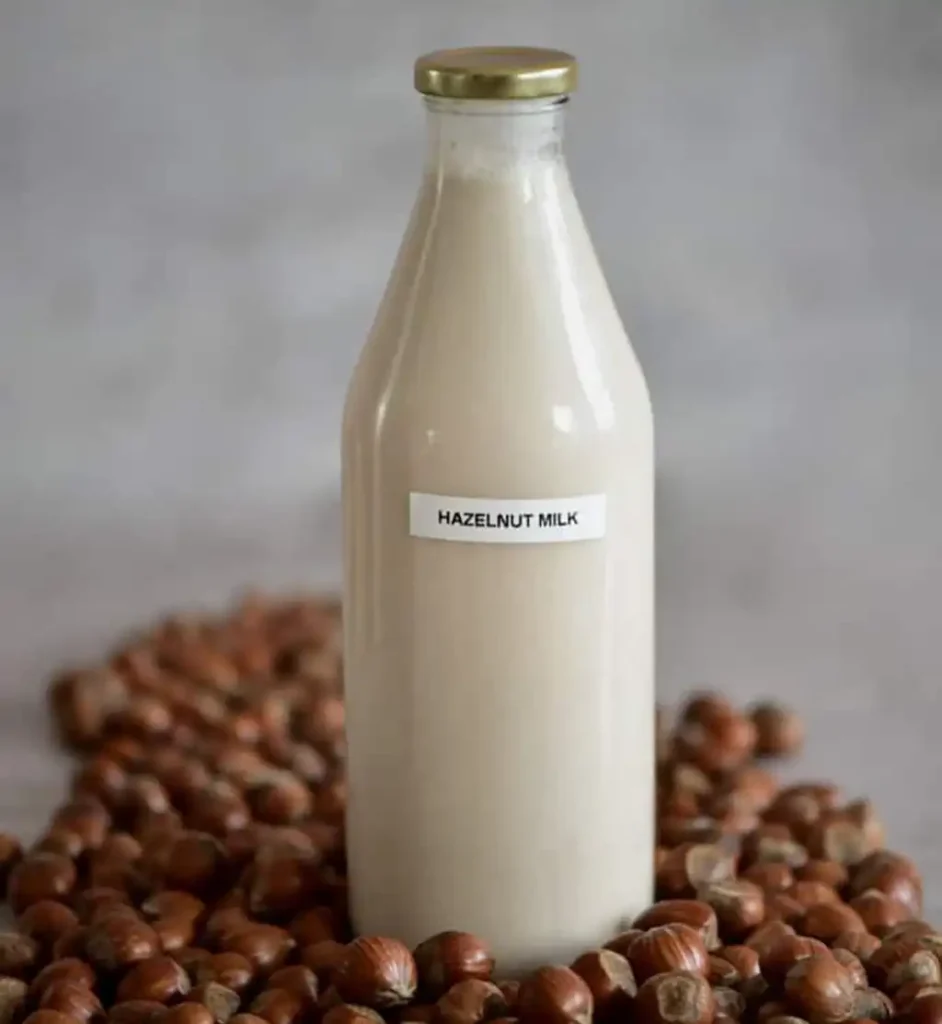
Hazelnut milk, a lesser-known dairy-free alternative, is prized for its distinct and robust nutty flavor, making it a great choice for various culinary uses. Derived from hazelnuts, this milk offers a rich, indulgent taste, perfect for enhancing coffee and baked goods. While its bold taste may not suit every recipe, it’s worth noting that some varieties contain added sugars or thickeners for taste and texture. Additionally, hazelnuts have an environmentally friendly edge over almonds, relying on wind for pollination and using less water in their cultivation.
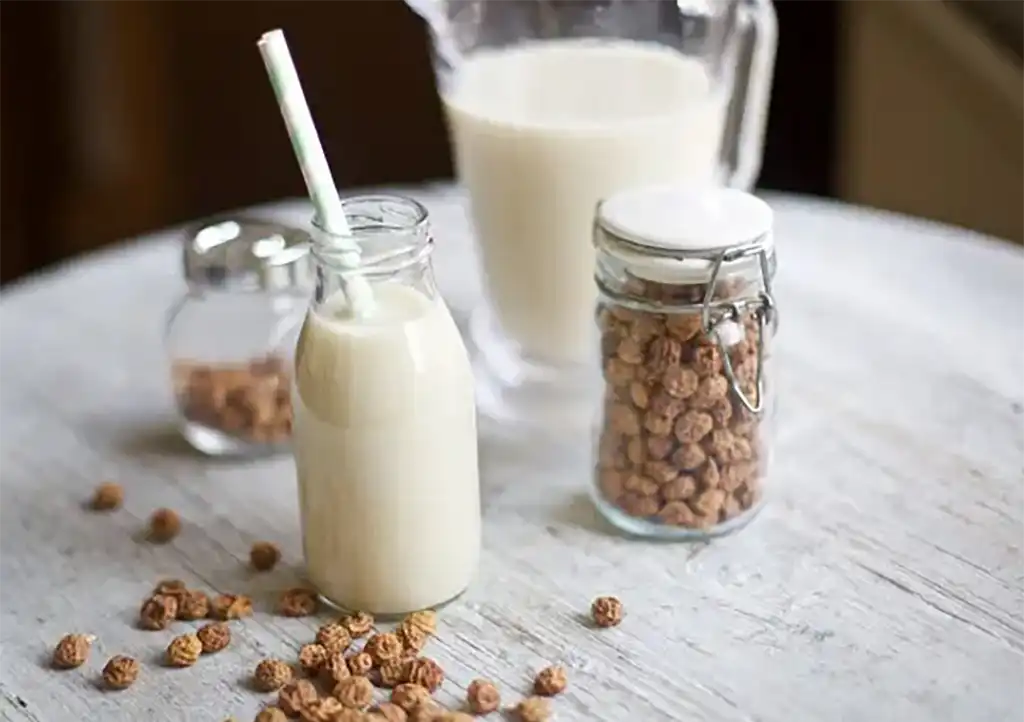
Tiger nut milk is a lesser-known but nutritious non-dairy milk alternative made from tiger nuts, which are tubers rather than actual nuts. These small tubers, about the size of a chickpea, derive their name from the distinctive stripes adorning their exterior. Tiger nut milk boasts a mildly sweet and nutty taste, ideal for various culinary applications. It is a dairy-free option, suitable for vegans and those with lactose intolerance. Beyond its delightful taste, tiger nut milk is appreciated for its low-calorie and naturally gluten-free attributes, making it an excellent choice for health-conscious individuals. Moreover, it is rich in essential nutrients, including iron and magnesium, enhancing its appeal as a part of a balanced diet. Tiger nuts are considered sustainable to grow, as they demand fewer resources. However, ethical considerations may arise regarding fair trade and responsible sourcing.
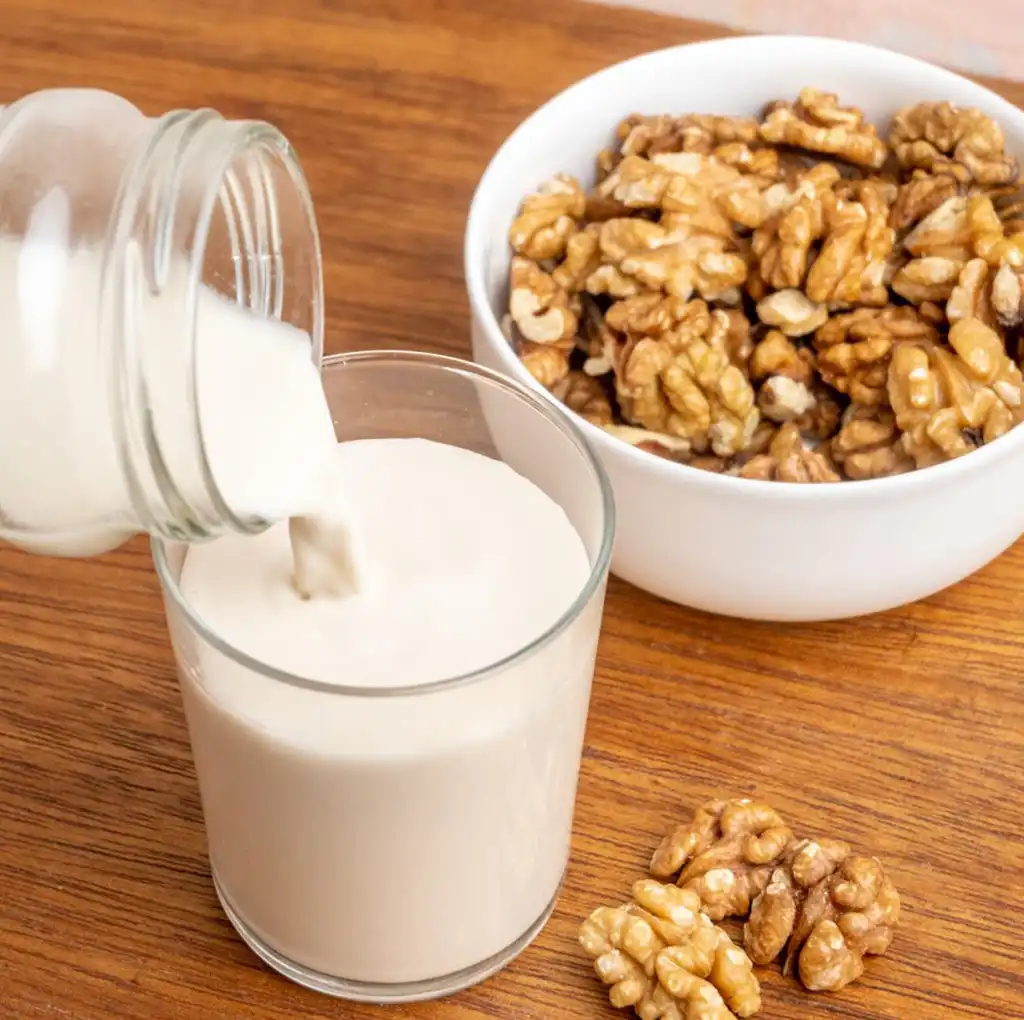
Walnut milk is a relatively new but noteworthy addition to the array of dairy-free milk alternatives, known for its distinct and robust nutty flavor. Crafted from walnuts, this milk offers a rich and indulgent taste, making it an excellent choice for enhancing coffee, cereals, or baked goods. It is a versatile option, suitable for those with dietary restrictions, as it is typically dairy-free and vegan-friendly. Additionally, walnuts are renowned for their heart-healthy qualities, as they provide a source of omega-3 fatty acids. However, it’s important to be aware that some variations of walnut milk may include added sugars or thickeners for taste and texture enhancement.

Quinoa milk, a lesser-known non-dairy milk alternative, is derived from the nutrient-rich quinoa grain, offering a neutral and versatile flavor ideal for diverse culinary applications. This dairy-free milk is particularly appreciated for its gluten-free nature, catering to individuals with dietary sensitivities. Quinoa milk stands out for its natural abundance of essential nutrients, including protein and various vitamins and minerals, making it a nutritionally valuable choice. As a source of complete protein, quinoa milk contains all nine essential amino acids, enhancing its dietary benefits. It’s also an environmentally friendly option, with quinoa being considered a sustainable crop due to its efficient water usage and adaptability to diverse climates. However, it’s essential to be mindful of potential additives such as sugars or thickeners that may be present in some commercial variations of quinoa milk.

Chia seed milk, derived from the versatile chia seeds, is a dairy-free milk alternative celebrated for its neutral and adaptable flavor that seamlessly complements various dishes. Notably, it is commonly gluten-free and often suitable for those with nut allergies. Chia seeds, the core ingredient, contribute to the milk’s nutritional richness, offering a spectrum of essential nutrients, vitamins, minerals, and dietary fiber. Chia seeds’ adaptability and resource-efficient growth contribute to the environmental sustainability of this milk. However, it’s crucial to be mindful of potential additives like sugars or thickeners that may be present in some commercial versions.
Flavor: Chia seed milk has a nutty flavor and a lightly toasted and natural fruit flavor with a creamy texture.
In summary, we have delved into the world of non-dairy milk alternatives, exploring familiar options like almond and oat milk, as well as more recent entrants such as tiger nut and quinoa milk. Our journey has revealed the distinct flavors, nutritional benefits, and potential drawbacks of each alternative. We’ve also touched on the motivations for choosing non-dairy options, including dietary restrictions and environmental concerns. Throughout, we’ve emphasized the significance of scrutinizing labels for added sugars and other ingredients. This guide equips you with the knowledge to make informed decisions when selecting the perfect milk alternative to align with your personal preferences and requirements.